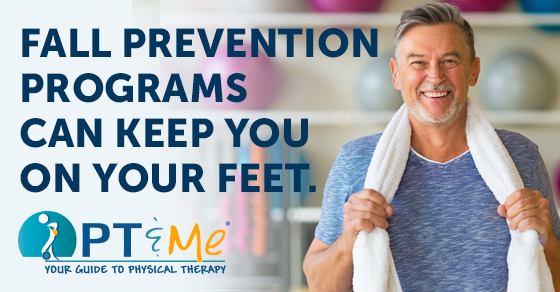As the global population ages, the importance of fall prevention programs for seniors cannot be overstated. Falls are a leading cause of injury, loss of independence, and even death among older adults. According to the World Health Organization (WHO), falls are the second leading cause of accidental or unintentional injury deaths worldwide, and individuals aged 65 and older are particularly vulnerable. In this context, fall prevention programs play a crucial role in enhancing the quality of life for seniors, reducing healthcare costs, and promoting independence.
The Risks and Consequences of Falls
Falls among seniors are associated with a myriad of adverse outcomes. Physically, they can result in fractures, head injuries, and other serious conditions that often lead to long-term disability. Hip fractures, for example, are a common and particularly debilitating consequence of falls, with many seniors never fully regaining their pre-fall mobility. Additionally, falls can cause significant psychological distress, including fear of falling again, which can lead to a decrease in physical activity, further weakening muscles and balance, and increasing the risk of future falls. Social isolation and depression are also common consequences, as seniors may withdraw from activities they once enjoyed due to fear or embarrassment.
The Economic Burden
The economic impact of falls among the elderly is substantial. In the United States alone, the direct medical costs of fall injuries are estimated to be over $50 billion annually. These costs include hospitalizations, emergency room visits, surgeries, and long-term rehabilitation, as well as indirect costs such as lost productivity and the need for long-term care. For healthcare systems already under strain from aging populations, the financial burden of falls is a significant concern. Therefore, investing in fall prevention programs can lead to considerable cost savings by reducing the incidence and severity of falls.
Key Components of Effective Fall Prevention Programs
Effective fall prevention programs are multifaceted, addressing various risk factors through a combination of interventions. The following components are commonly included in successful programs:
- Exercise and Physical Therapy: Regular physical activity, especially exercises that enhance balance, strength, and flexibility, is one of the most effective strategies for fall prevention programs for seniors. These programs often include activities like balance exercises, strength training, and flexibility exercises, all of which contribute to improved stability and reduced fall risk.
- Home Safety Assessments: Many falls occur in the home, where seniors spend most of their time. Home safety assessments involve evaluating and modifying living environments to reduce hazards. This can include installing grab bars in bathrooms, improving lighting, removing loose rugs, and ensuring that pathways are clear of obstacles.
- Medication Management: Certain medications, especially those that affect the central nervous system, can increase the risk of falls by causing dizziness or drowsiness. Fall prevention programs often include medication reviews conducted by healthcare professionals to identify and adjust medications that may contribute to fall risk.
- Vision and Hearing Checks: Impaired vision and hearing can significantly increase the likelihood of falls. Regular eye and ear examinations can ensure that seniors have the necessary aids, such as glasses or hearing aids, to navigate their environments safely.
- Education and Awareness: Educating seniors, their families, and caregivers about fall risks and prevention strategies is a vital component of any fall prevention program. Awareness campaigns can help change behaviors and encourage proactive measures to mitigate fall risks.
Community and Healthcare System Involvement
The success of fall prevention programs often depends on the involvement and collaboration of community organizations and healthcare systems. Community centers, senior living facilities, and local health departments can play pivotal roles in organizing and delivering fall prevention initiatives. Healthcare providers, including doctors, nurses, and pharmacists, are crucial in identifying at-risk individuals and referring them to appropriate programs.
Programs such as the U.S. Centers for Disease Control and Prevention’s (CDC) STEADI (Stopping Elderly Accidents, Deaths & Injuries) initiative offer comprehensive resources and toolkits for healthcare providers to integrate fall prevention into routine care. Such programs emphasize the importance of screening for fall risk, assessing modifiable risk factors, and intervening appropriately.
Technological Innovations in Fall Prevention
Advancements in technology are opening new avenues for fall prevention. Wearable devices and smart home technologies can monitor seniors’ movements and detect falls in real-time, providing immediate alerts to caregivers or emergency services. Virtual reality (VR) and augmented reality (AR) are being explored for balance training and rehabilitation, offering engaging and effective ways to improve physical capabilities.
Additionally, telehealth services can facilitate remote monitoring and consultations, allowing healthcare providers to assess fall risks and recommend interventions without the need for in-person visits. These technological innovations not only enhance the effectiveness of fall prevention programs but also increase their accessibility, especially for seniors in remote or underserved areas.
Personal Stories and Successes
Personal stories of seniors who have benefited from fall prevention programs can be powerful motivators for others. For instance, a senior who participated in a community-based exercise program may share how the program helped them regain confidence and mobility, reducing their fear of falling. Testimonials and success stories can inspire other seniors to engage in fall prevention activities and seek out available resources.
Conclusion
Fall prevention programs are essential for safeguarding the health and well-being of seniors. By addressing the multifaceted nature of fall risks through exercise, home safety modifications, medication management, vision and hearing checks, and education, these programs can significantly reduce the incidence and severity of falls. The involvement of community organizations, healthcare systems, and technological innovations further enhances the reach and effectiveness of these programs. As the global population continues to age, the implementation and support of comprehensive fall prevention programs will be critical in ensuring that seniors can live safer, healthier, and more independent lives.






